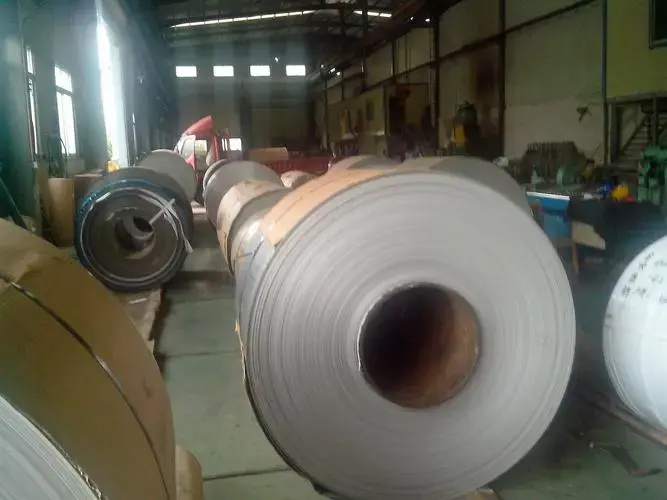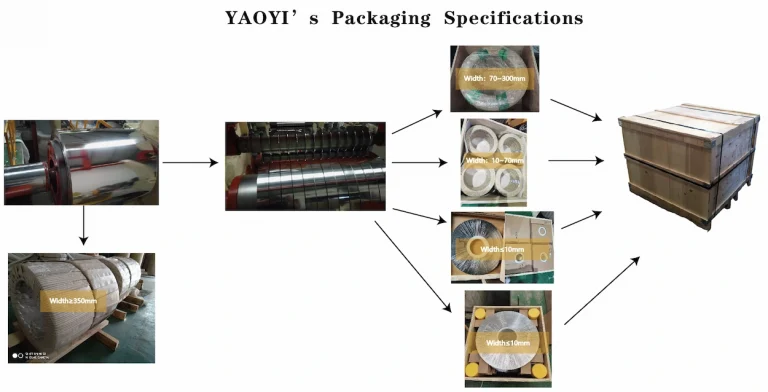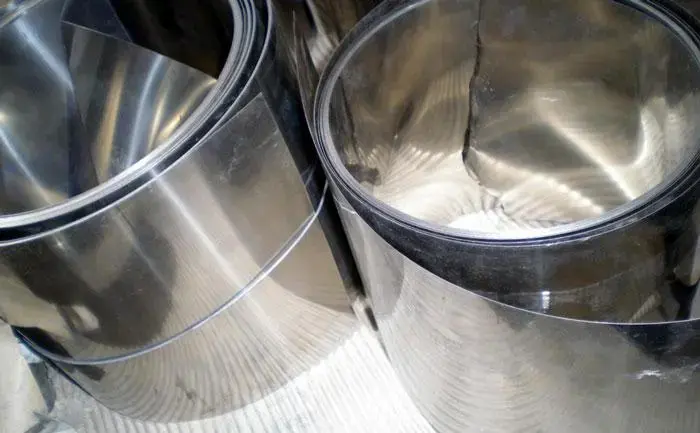SUS 304 stainless steel is the most widely used stainless steel variety in the world. In our daily life, the stainless steel that we often come into contact with is SUS 304. 304 stainless steel has good mechanical properties and processing and forming properties.
But, do you really understand SUS 304 stainless steel?
Below, I would like to show you what kind of SUS 304 ss yaoyi provides you from both characteristics and production process characteristics.


According to the stability of austenite, austenitic stainless steels are usually divided into two types: stable and metastable. The stable austenitic stainless steel still maintains the austenite microstructure after a large amount of deformation, while the metastable austenitic stainless steel Bulk stainless steel is easy to transform into martensite microstructure when strained, such as the typical and widely used austenitic stainless steel of 304 steel. Compared with ferrite and martensitic stainless steel, austenitic stainless steel is non-magnetic.
Moreover, the metastable austenitic stainless steel has a high cold work hardening rate of 45%. For example, the yield strength of stainless steel can be increased from 228 MPa to 1375 MPa after cold working deformation. aisi 304 can have such a large cold deformation strengthening, on the one hand, because of the multiplication of dislocations in the crystal during the strong cold deformation process, on the other hand, the transformation from austenite to martensite and the formation of deformation After the martensite transformation of ss304 occurs, the stainless steel has certain magnetic properties.
In 304 stainless steel, chromium mainly improves the corrosion resistance of ss304. And the influence of nickel on the mechanical properties of nickel-chromium austenitic stainless steel is mainly determined by its influence on the stability of austenite.
Within the range of nickel content where martensitic transformation may occur, as the nickel content increases, the strength of the stainless steel decreases, and the plasticity increases. For the chromium nitrogen austenitic stainless steel with a stable austenite structure, the addition of nickel can further improve its initial properties. Nickel can also reduce the cold work hardening tendency of austenitic steel, weaken the martensite transformation during cold working, and weaken the cold work hardening phenomenon of austenite itself.
Therefore, the increase in nickel content is conducive to the cold forming performance of 304 stainless steel. In addition, increasing the nickel content can reduce or even eliminate the ferrite of ss304, thereby improving its hot workability.
In 304 stainless steel, the martensite content increases as the number of cold deformation increases. The formation of martensite in austenitic stainless steel has an important impact on its mechanical properties and cold forming, and the magnetic properties of the steel will also increase. This phenomenon will increase the possibility of product cracking during cold processing such as stamping and deep drawing.
Try for free AISI 4140 Low Alloy Steel
304 stainless steel thin strips are usually produced by the cold emulsion method. The products have smooth and shiny surfaces, precise thickness dimensions, and good plate shapes. The steel plate used directly in the cold work-hardened state can also obtain the required mechanical properties.
Cold-rolled stainless steel is mainly produced in coils. Only small batches, large specifications and thicker steel plates, or newly developed special steel grades can be single-rolled, or if they do not have the conditions for coil production, single-roll milking is also used. . Annealing, pickling, and grinding are required before cold rolling, and flattening, straightening, shearing, and board handling are required after cold rolling.
Due to the characteristics of stainless steel and the special requirements for product quality, the cold rolling production process has the following requirements, difficulties, and characteristics.
(1) In the rolling process, to perform high-efficiency and high-precision rituals, generally rigid rolling mills are used. Use a multi-roll cold rolling mill. It is difficult to set proper reduction system, tension system, speed system, and other parameters to control;
(2) Cold-rolled stainless steel is a high-grade steel product, which has very strict requirements on surface quality, not only does not allow residual metallurgical defects caused by previous processes.And no scratches are allowed. The steel coils of each unit are required to be tightly coiled and coiled. Many units before and after cold rolling must be placed on the interlayer pad of the steel coil when coiling. It is difficult to control the slipping defect of cold rolling;
(3) Difficult controlling the board type. Rolling according to ordinary technology, it is difficult to meet the requirements of high-precision stainless steel plate shape;
(4) Poor shape stability of raw materials;
(5) Automatic flatness control lag;
(6)High-precision thickness control is difficult.
Read on:AISI 430 Stainless Steel
The gauge of 304 stainless steel refers to its thickness. The gauge number inversely relates to the thickness of the material – the higher the gauge number, the thinner the material. For instance, a 16-gauge 304 stainless steel sheet is thicker than a 20-gauge sheet. Understanding the gauge of the stainless steel is crucial in determining its suitability for specific applications.
The gauge of sus 304 plays a significant role in its application. The thickness of the material can influence its strength, durability, and functionality in various uses.
The gauge of 304 stainless steel can significantly impact its strength. Thicker materials, which have a lower gauge number, tend to be stronger and more durable.
The functionality of ss304 can be influenced by its gauge. For instance, thinner materials, which have a higher gauge number, are more flexible and easier to form, making them suitable for certain applications.
Understanding the gauge of sus 304 is crucial in determining its suitability for specific applications. For instance, a lower gauge material might be preferred for its strength in construction applications, while a higher gauge material might be suitable for its flexibility in manufacturing processes.
The gauge of 304 stainless steel can also influence the weight of the material. This can be a crucial factor in applications where weight is a significant consideration, such as in the manufacturing of lightweight devices or equipment.
Identifying 304 stainless steel can be done through several methods. One common method is through the use of a magnet. As ss 304 is generally non-magnetic, a magnet will not stick to a genuine 304 stainless steel. However, this method is not 100% accurate as some forms of ss304 may show slight magnetism due to the cold working process.
Another method is through chemical testing. This involves applying a drop of a chemical solution, such as a nitric acid solution, onto the stainless steel. If the solution produces a green coloration, it indicates the presence of nickel, which is a key component of 304 stainless steel.
Lastly, professional metal testing services can be used to accurately identify the type of stainless steel. These services use advanced techniques such as X-ray fluorescence (XRF) to determine the exact composition of the metal.
Magnet testing is a simple and quick method to identify 304 stainless steel. However, it is not 100% accurate as some forms of sus 304 stainless steel may show slight magnetism due to the cold working process.
Chemical testing involves applying a chemical solution onto the stainless steel to detect the presence of nickel. This method is more accurate than magnet testing but requires the use of chemicals.
Professional metal testing services provide the most accurate identification of 304 stainless steel. These services use advanced techniques such as X-ray fluorescence (XRF) to determine the exact composition of the metal.
The choice of method for identifying sus 304depends on the specific requirements and resources available.

When comparing 304 stainless steel and 18/10 stainless steel, it’s important to note that they are essentially the same. The term “18/10” is often used to describe the composition of stainless steel, where “18” represents the percentage of chromium and “10” represents the percentage of nickel. Therefore, sus 304, which contains 18% chromium and 8-10.5% nickel, can also be referred to as 18/10 stainless steel.
sus 304 and 18/10 stainless steel are essentially the same, with both containing 18% chromium and around 10% nickel. This composition provides excellent corrosion resistance and durability, making it suitable for a wide range of applications.
The composition of sus 304 and 18/10 stainless steel is essentially the same, with both containing 18% chromium and around 10% nickel. This composition provides excellent corrosion resistance and durability.
The term “18/10” is often used to describe the composition of stainless steel, where “18” represents the percentage of chromium and “10” represents the percentage of nickel. Therefore, sus 304 can also be referred to as 18/10 stainless steel.
Both 304 stainless steel and 18/10 stainless steel have excellent corrosion resistance and durability, making them suitable for a wide range of applications.
304 stainless steel, or 18/10 stainless steel, is widely used in various applications due to its superior properties. It is commonly used in kitchenware, industrial equipment, and medical instruments.
For instance, 304 stainless steel used in kitchen appliances and utensils is typically between 0.5mm to 3mm thick. In contrast, 304 stainless steel used in industrial applications, such as construction and automotive parts, can be much thicker, often exceeding 3mm.
The thickness of sus 304 can vary greatly depending on its form and the specific application it is used for. It can range from less than 1mm for kitchen appliances and utensils to over 3mm for industrial applications.
For kitchen appliances and utensils, sus 304 is typically between 0.5mm to 3mm thick. This thickness provides a good balance between durability and ease of use.
In industrial applications, such as construction and automotive parts, sus 304 can be much thicker, often exceeding 3mm. This increased thickness provides additional strength and durability.
The thickness of 304 stainless steel can vary greatly depending on its form and the specific application it is used for. This variability allows sus 304 to be used in a wide range of applications.
The thickness of 304 stainless steel can be determined using various methods, including using a micrometer or other precision measuring tools. This allows for accurate measurements to ensure the material is suitable for its intended application.
Checking the authenticity of 304 stainless steel involves several methods. One common method is the magnet test. Genuine sus 304 is generally non-magnetic, so a magnet will not stick to it. However, this method is not foolproof as some forms of sus 304 may show slight magnetism due to the cold working process.
Another method is through chemical testing. This involves applying a drop of a chemical solution, such as a nitric acid solution, onto the stainless steel. If the solution produces a green coloration, it indicates the presence of nickel, which is a key component of sus 304.
Hardening 304 stainless steel involves a process called work hardening or strain hardening. This process involves deforming the steel at a temperature below its recrystallization point, which increases its hardness and strength. However, it’s important to note that while this process can increase the hardness of ss304, it also makes the steel less ductile and more brittle.
Another method to harden ss304 is through a process called cold working. This involves deforming the steel at room temperature, which also increases its hardness and strength. However, similar to work hardening, cold working also makes the steel less ductile and more brittle.
It’s worth noting that ss304 cannot be hardened by heat treatment, unlike some other types of stainless steel.
Hardening 304 stainless steel can be achieved through work hardening or cold working. However, these processes also make the steel less ductile and more brittle. It’s also important to note that 304 stainless steel cannot be hardened by heat treatment.
Work hardening involves deforming the steel at a temperature below its recrystallization point, which increases its hardness and strength. However, this process also makes the steel less ductile and more brittle.
Cold working involves deforming the steel at room temperature, which also increases its hardness and strength. However, similar to work hardening, cold working also makes the steel less ductile and more brittle.
Unlike some other types of stainless steel, 304 stainless steel cannot be hardened by heat treatment. This is due to its specific chemical composition.
When hardening ss304, it’s important to consider the trade-off between increased hardness and decreased ductility. The specific requirements of the application will determine the most suitable hardening process.